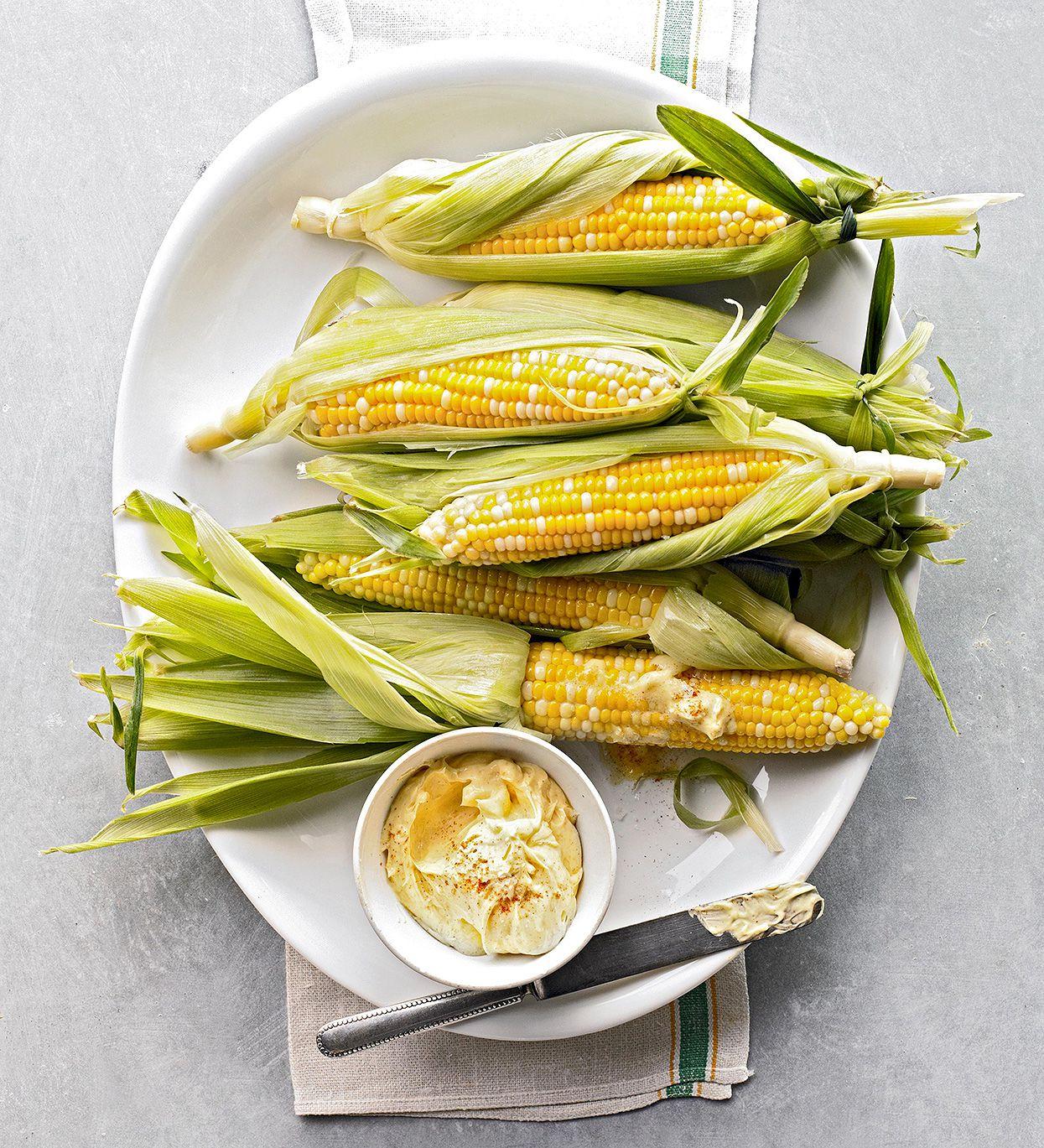In my home state of Iowa, when it comes to corn, if you plant it, we will come. Starting around late August each year, pick-up trucks with beds piled high with freshly-picked ears start popping up at farmers markets and in random parking lots. Locals wander over to stock up on stalks to toss on the grill, to slice and toss into salsas, or simply eat raw—in-season produce is sweet and flavorful enough that all it needs is a good wash.
While the husks disguise what’s hiding inside, it was always an exciting surprise to discover the color of the kernels: almost always yellow, white, or a mix of the two (aka bicolor). During one market visit last fall, as a child watched his parents peel back the corner of the husk to peek underneath, I heard the little one ask, “should you buy yellow or white corn?” I had always viewed them as equally amazing, and had never really thought deeply about the variances between the two until that moment.
It was then that I made it my mission to get that kiddo—and us—an answer before the next glorious corn season begins.
- Juliana Hale, senior brand manager, Better Homes & Gardens Test Kitchen
- Thomas Hanyzewski, vegetable category manager at Fresh Thyme Market in Chicago, Illinois
- Dana Peters, a Barney, Georgia-based produce and floral field inspector at Whole Foods Market
Yellow Corn vs. White Corn
The color of corn kernels is primarily determined by the plant's genetics, explains supermarket vegetable category manager Thomas Hanyzewski.
“The specific combination of genes inherited from the parent plants ultimately dictates the pigment and resulting kernel color. Yellow and white are the most common varieties, however, corn plants can also produce kernels in shades of red, blue, purple, and even black,” Hanyzewski says.
When comparing the two most common varieties, yellow corn vs. white corn, “both types of corn have similar calories, carbohydrates, and fiber,” adds Dana Peters, a produce and floral field inspector.
Yellow corn has a slight nutritional advantage because of the feature that makes it yellow: beta-carotene. (Also found in foods like carrots and pumpkin, this type of vitamin A has been shown to support eye and skin health.) When beta-carotene isn't present, the kernels are pale white.
Should You Buy Yellow or White Corn?
Any flavor differences are very subtle, our experts agree. Yellow corn tends to be faintly sweeter and heartier, thanks to that beta-carotene. But both types of corn are naturally sweet. White corn is a hint milder and more tender in texture, Hanyzewski notes.
“The quality of either one depends on freshness,” says fellow Iowan and Test Kitchen manager Juliana Hale. “Buy either! Buy both!”
In fact, as we mentioned, some corn varieties include alternating corn and white kernels on the same cob. Often, the choice of yellow corn vs. white corn vs. multicolor comes down to how you want the finished dish to look, Hale tells us. Your best bet is to buy whatever corn you can find closest to the time it has been picked.
Beyond that, if you want to be particular, Hanyzewski suggests that we choose white corn for lighter, more delicate dishes where a clean, subtle corn flavor is desired. Chilled corn soups, homemade tortillas, tamales, Corn and Blueberry Salad, Street Corn Salsa, and Bacon-Corn-Tomato Salad are all ideal as white corn recipes.
Choose yellow corn for grilling, canning, and cooked side dishes or soups, Hanyzewski recommends. Easy Mexican-Style Air-Fryer Corn on the Cob, Spicy Chicken-Corn Chowder, Grilled Corn, and Canned Corn are all fantastic as yellow corn recipes.
Or opt for both corn kernel colors on one ear for the best of both worlds: “Bicolor corn is the most used variety today, and is extremely versatile,” Hanyzewski says.
How to Choose Fresh Sweet Corn
As you invest in your ears, look for corn that has:
- A tightly wrapped green husk that feels moist rather than dry and brittle
- A heavy weight for its size
- Silks at the top of the ear that are pale and damp
- Plump kernels with no large gaps (run your fingers along the outside of the husk to check)
How to Store Fresh Sweet Corn
The best way to store fresh sweet corn is for as short of time as possible. Ideally, you’ll enjoy it within 24 hours of being picked, but we totally understand that’s not always possible. To maximize its fresh lifespan, keep corn in its husk, and store it in your refrigerator’s crisper drawer (set to 35° to 40°F) for up to 1 week.



